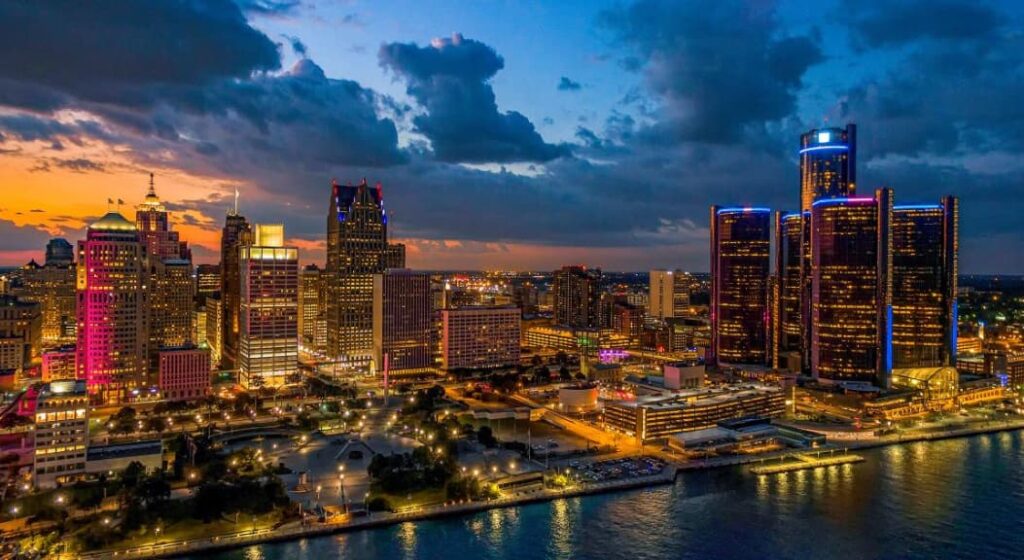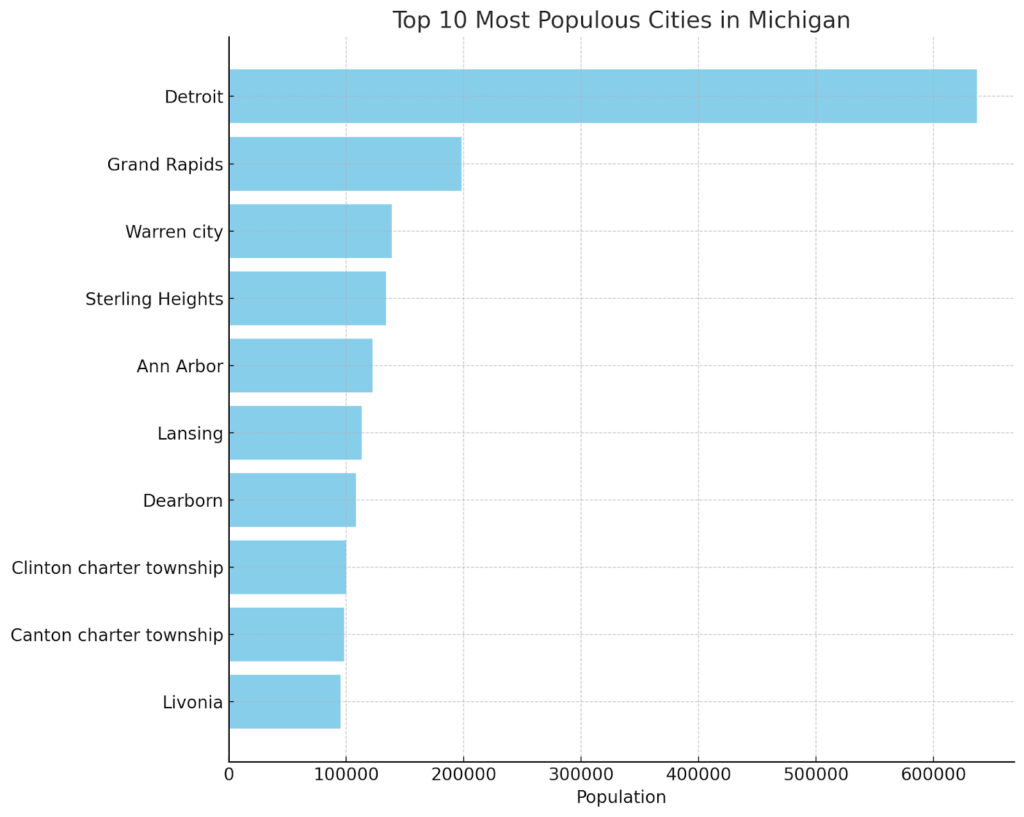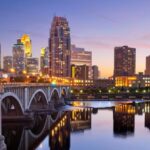
Michigan, a state known for its diverse landscapes ranging from the vast Great Lakes to dense forests, bustling urban centers, and serene small towns, also boasts a vibrant mosaic of cities, each with its unique charm and character. Its cities are hubs of cultural, economic, and educational activities that reflect the rich heritage and dynamic future of the Wolverine State. This article delves into the top 10 most populous cities in Michigan, offering a closer look at what makes each city stand out in terms of population, cultural significance, and key attractions.
Michigan’s cities, from the bustling streets of Detroit to the serene landscapes of Livonia, each contribute their unique flavors to the state’s rich tapestry. These cities, with their diverse populations and economic landscapes, reflect Michigan’s ongoing story of resilience, innovation, and community. From the automotive heritage of Dearborn to the academic prowess of Ann Arbor, and the industrial prowess of Warren city to the suburban tranquility of Sterling Heights, each city paints a vivid picture of Michigan’s past, present, and future.
What are the Top Michigan Cities by Population?

1. Detroit (Population: 636,787)
Detroit, famously known as the Motor City, stands as Michigan’s largest city, boasting a rich history rooted in the automotive industry. It’s a city of resilience and innovation, undergoing a remarkable transformation with revitalized neighborhoods, burgeoning arts scene, and waterfront redevelopment. Detroit’s downtown area, with the iconic Renaissance Center, offers a mix of modern conveniences and historic charm. The city is also celebrated for its contributions to music, particularly the Motown Sound, with the Motown Museum attracting visitors from around the globe. Despite facing economic challenges, Detroit remains a symbol of American ingenuity and perseverance.
2. Grand Rapids (Population: 198,096)
Grand Rapids, set along the Grand River, is known for its vibrant arts scene, craft breweries, and historical architecture. It’s a city that combines small-town warmth with big-city sophistication. The Frederik Meijer Gardens & Sculpture Park exemplifies this blend, offering a serene retreat with impressive art installations. Grand Rapids is also a leader in sustainable urban development, with a strong focus on green spaces and environmental initiatives. The city’s cultural calendar is packed with festivals, reflecting its diverse community and lively spirit.
3. Warren city (Population: 138,588)
Warren city, part of the Detroit metropolitan area, is a blend of residential tranquility and industrial might. It’s home to the General Motors Technical Center, a landmark of automotive innovation. Warren is known for its commitment to community and family-friendly amenities, including an extensive park system and the Warren Civic Center, which hosts various cultural and recreational activities.
The city also places a strong emphasis on education, with numerous schools and community colleges serving as the foundation for its future growth. Warren’s diverse population adds to its vibrancy, with a rich tapestry of cultural events, festivals, and culinary experiences reflecting its melting pot of backgrounds. Despite its industrial roots, Warren maintains a strong sense of community, with neighborhood associations, volunteer groups, and civic organizations working together to enhance the quality of life for residents. With its combination of economic opportunities and family-friendly amenities, Warren continues to attract new residents and businesses alike.
4. Sterling Heights (Population: 133,744)
Sterling Heights, a key suburb of Detroit, is renowned for its diverse community and vibrant cultural scene. The city’s ethnic festivals, such as the American-Polish Festival, highlight its multicultural heritage. Sterling Heights is also home to Dodge Park and the Sterling Heights Nature Center, offering residents and visitors alike a chance to explore outdoor activities and connect with nature.
Its commitment to family-friendly environments and economic development makes Sterling Heights an attractive place for residents and businesses alike. The city’s strategic location, with easy access to major highways and proximity to Detroit’s urban amenities, further enhances its appeal. Sterling Heights’ strong sense of community is evident in its active neighborhood associations and community events, fostering a welcoming and inclusive atmosphere for all. With its blend of cultural richness, recreational opportunities, and economic vitality, Sterling Heights continues to thrive as a desirable place to call home in the greater Detroit area.
5. Ann Arbor (Population: 122,216)
Ann Arbor, the home of the University of Michigan, is a city that thrives on academic excellence, research innovation, and a lively arts scene. Its downtown area is a bustling hub of cafes, bookstores, galleries, and theaters, reflecting the city’s youthful energy and intellectual vibe. Ann Arbor’s extensive park systems and commitment to environmental sustainability add to its appeal as a city that values quality of life. The university’s influence is evident in the city’s diverse population and its status as a center for medical research and technology startups.
6. Lansing (Population: 112,986)
As the capital city of Michigan, Lansing is at the heart of the state’s political and economic activities. It’s a city with a diverse cultural landscape, exemplified by the Michigan State Capitol, museums, and historic sites. Lansing’s economy is bolstered by government, education, and healthcare sectors, with Michigan State University providing a steady stream of innovation and talent. The city’s revitalization efforts have led to the development of the Lansing River Trail, offering scenic paths for recreation and exploration.
The Michigan State Capitol, constructed in the late 19th century, stands as an architectural marvel, showcasing the state’s rich history and political significance. Visitors can explore its grand chambers and ornate decorations while learning about Michigan’s legislative processes and governance.
Lansing’s museums, such as the Michigan History Center and the Impression 5 Science Center, offer engaging exhibits and interactive experiences for visitors of all ages. These cultural institutions serve as educational hubs, preserving the region’s heritage and promoting scientific discovery. In addition to its cultural attractions, Lansing boasts vibrant neighborhoods, bustling commercial districts, and a thriving arts scene. From eclectic galleries to lively theaters, there’s always something happening in this dynamic city. Overall, Lansing offers a blend of history, culture, and innovation, making it a captivating destination for residents and visitors alike.
7. Dearborn (Population: 108,414)
Dearborn is known worldwide for its deep ties to the automotive industry, being the headquarters of the Ford Motor Company. The city celebrates its heritage at The Henry Ford, an expansive museum complex that draws visitors interested in American history and innovation. Dearborn’s large Arab-American community enriches the city with its cultural festivals, cuisine, and businesses, making it a melting pot of traditions and a model of multicultural coexistence. The city’s commitment to education and community wellness is evident in its public spaces and institutions.
8. Clinton charter township (Population: 100,107)
Clinton Charter Township is notable for its blend of suburban living and natural beauty, with numerous parks and waterways offering recreational opportunities. The township emphasizes community engagement and quality of life, with a variety of shopping centers, dining options, and entertainment venues. Its strategic location near Lake St. Clair provides residents with access to waterfront activities and contributes to the area’s appeal as a place to live and work. Clinton Township’s diverse community and family-friendly environment make it a cornerstone of Macomb County.
9. Canton charter township (Population: 98,251)
Canton Charter Township, nestled in Wayne County, is a community characterized by its family-oriented neighborhoods, excellent schools, and robust parks and recreation department. The township’s Summit on the Park community center is a focal point for fitness, wellness, and cultural events. Canton is also known for its commitment to sustainability and green initiatives, maintaining a balance between development and environmental preservation.
Its diverse population and economic stability contribute to its reputation as one of the most desirable places to live in the metro Detroit area. Residents enjoy access to a wide range of amenities, including shopping centers, dining establishments, and entertainment venues. The township’s strong sense of community is evident in its numerous events and activities, which bring neighbors together and foster connections. With its combination of urban convenience and suburban tranquility, Canton Charter Township offers an exceptional quality of life for its residents, making it a sought-after destination for families and individuals alike.
10. Livonia (Population: 94,928)
Livonia, a suburb of Detroit, combines the charm of residential life with the convenience of urban access. It’s a city that prides itself on a strong sense of community, quality education, and public safety. With an extensive array of parks, recreational facilities, and a vibrant retail and dining scene, Livonia offers a balanced lifestyle for its residents. The city’s strategic location and business-friendly environment have attracted a mix of industries, contributing to its economic vitality and making it a key player in the region’s growth.
Michigan’s cities, from the bustling streets of Detroit to the serene landscapes of Livonia, each contribute their unique flavors to the state’s rich tapestry. These cities, with their diverse populations and economic landscapes, reflect Michigan’s ongoing story of resilience, innovation, and community.
Last modified: February 28, 2024

